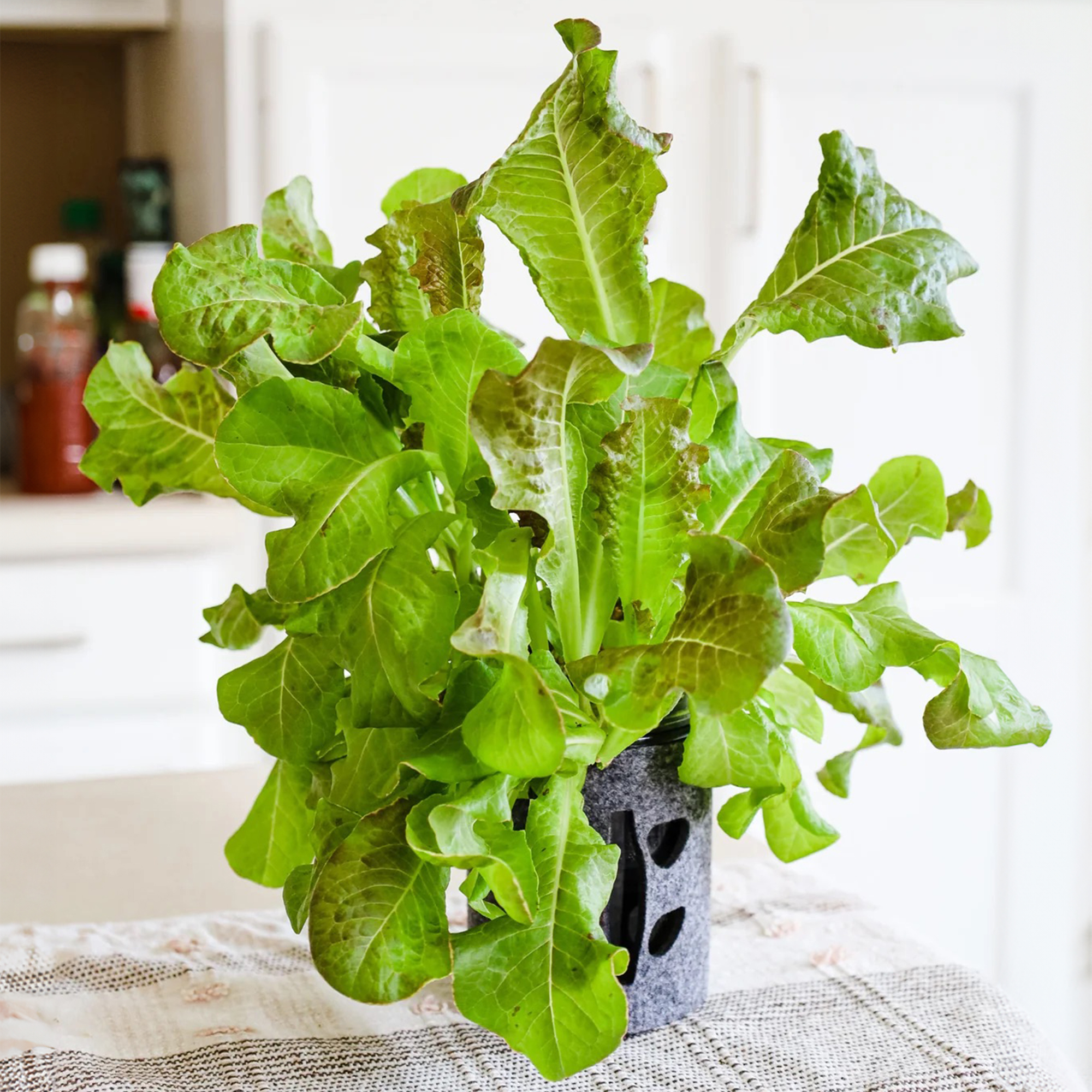How To Grow Lettuce In Water: Easy Hydroponics For Soil-Free Leaves Year-Round
Want fresh lettuce without the fuss? Skip the soil and learn how to grow it hydroponically on your countertop or windowsill.
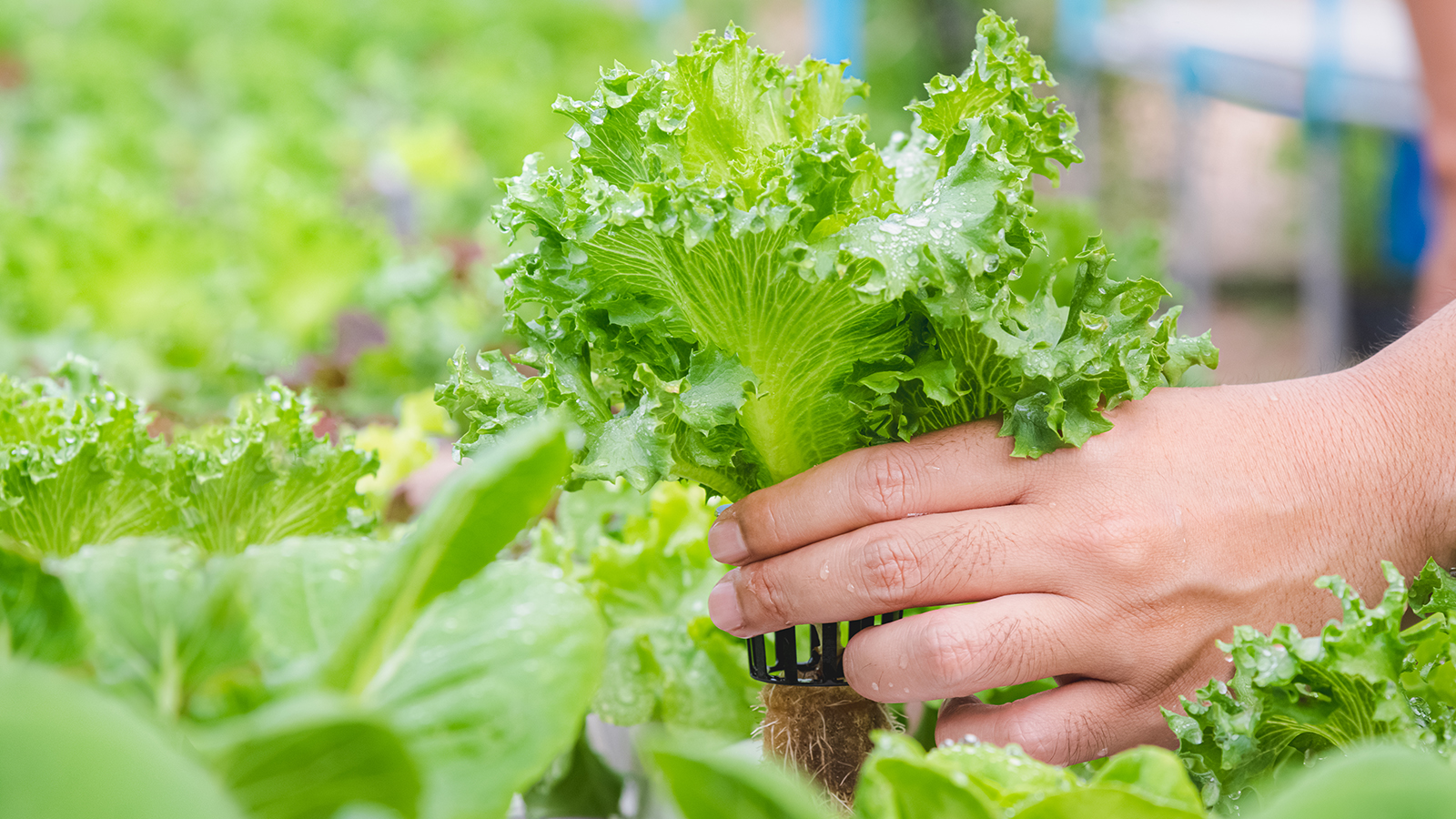

If you are looking for a reliable supply of leafy lettuce for quick salads, look no further than your countertop or sunny window. Growing hydroponic lettuce indoors is about the easiest thing you can do to ensure you have greens at the ready. All you have to do is provide some light and nutrients, and you’ll receive a year-round harvest and bowlfuls of salad.
Hydroponics is a tried-and-tested way of growing plants in water without soil. Instead, the method uses alternative growing mediums, such as rockwool or clay pebbles, which allow the roots to anchor the plant. Nutrients are delivered by adding fertilizer directly to the water.
It might sound more complicated than planting in soil, but hydroponics is a surprisingly easy way to start growing lettuce indoors and requires very little kit to get started.
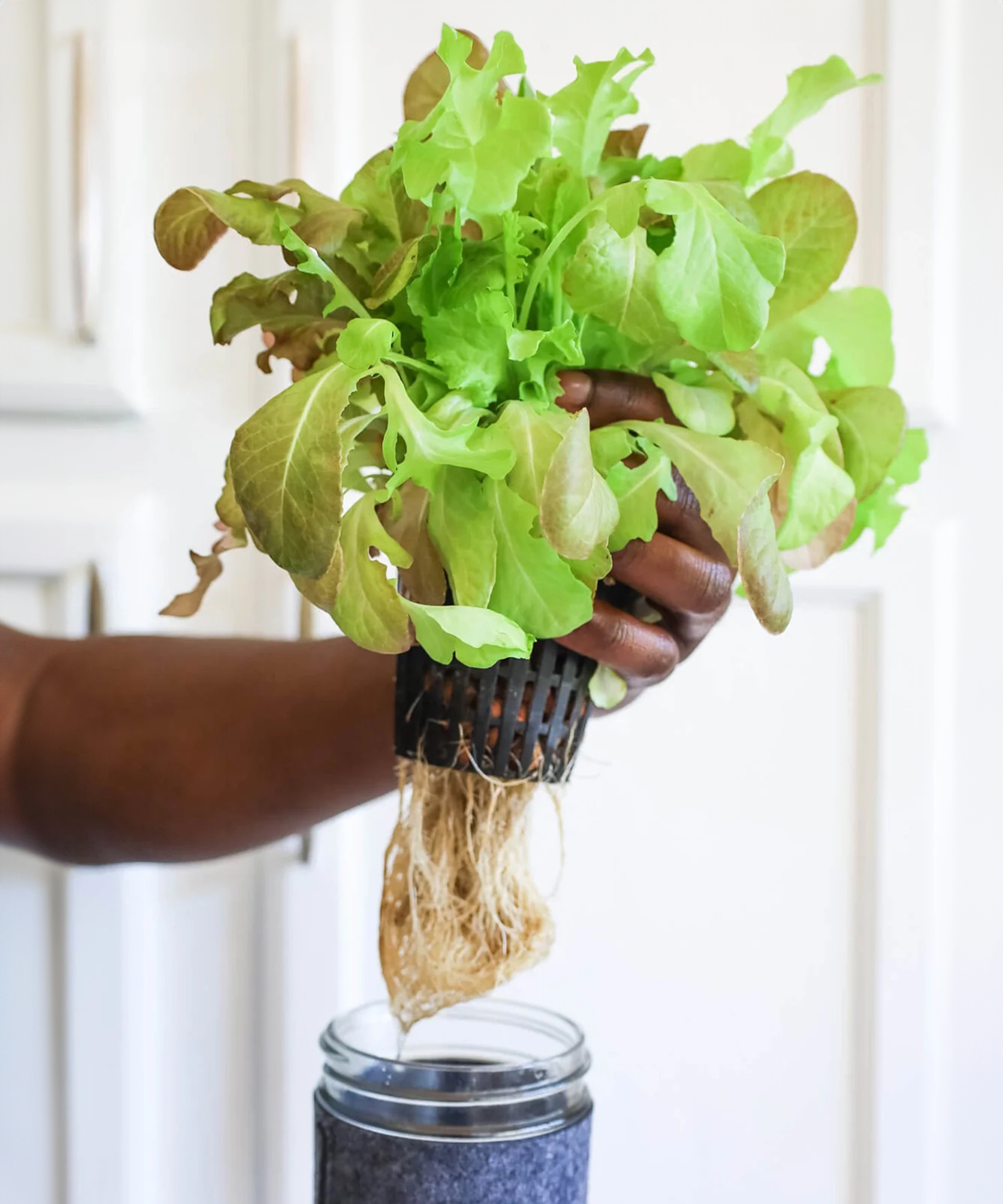
Reasons to Grow Lettuce Hydroponically
Lettuce is one of the easiest crops you can grow outside in containers or a garden bed, and doesn't take up too much room. So why grow lettuce hydroponically indoors?
- No dirty leaves. Dirt has a way of getting in and staying in the lettuce leaves’ nooks and crannies – and it seems those leaves are never not sandy. With hydroponic growing, there’s no dirt to worry about.
- Eliminate pests. Outdoor lettuce is subjected to slugs, bugs, deer, and groundhogs – and sometimes all that lettuce is gone without you harvesting a single leaf. Protect your harvest by growing indoors.
- Grow year-round. Grown hydroponically indoors, you can have lettuce ready for harvest every day of the year, without having to worry about extreme weather conditions.
- No garden? No problem! Even apartment dwellers can grow lettuce, thanks to hydroponic growing techniques and a sun-filled window.
What You’ll Need
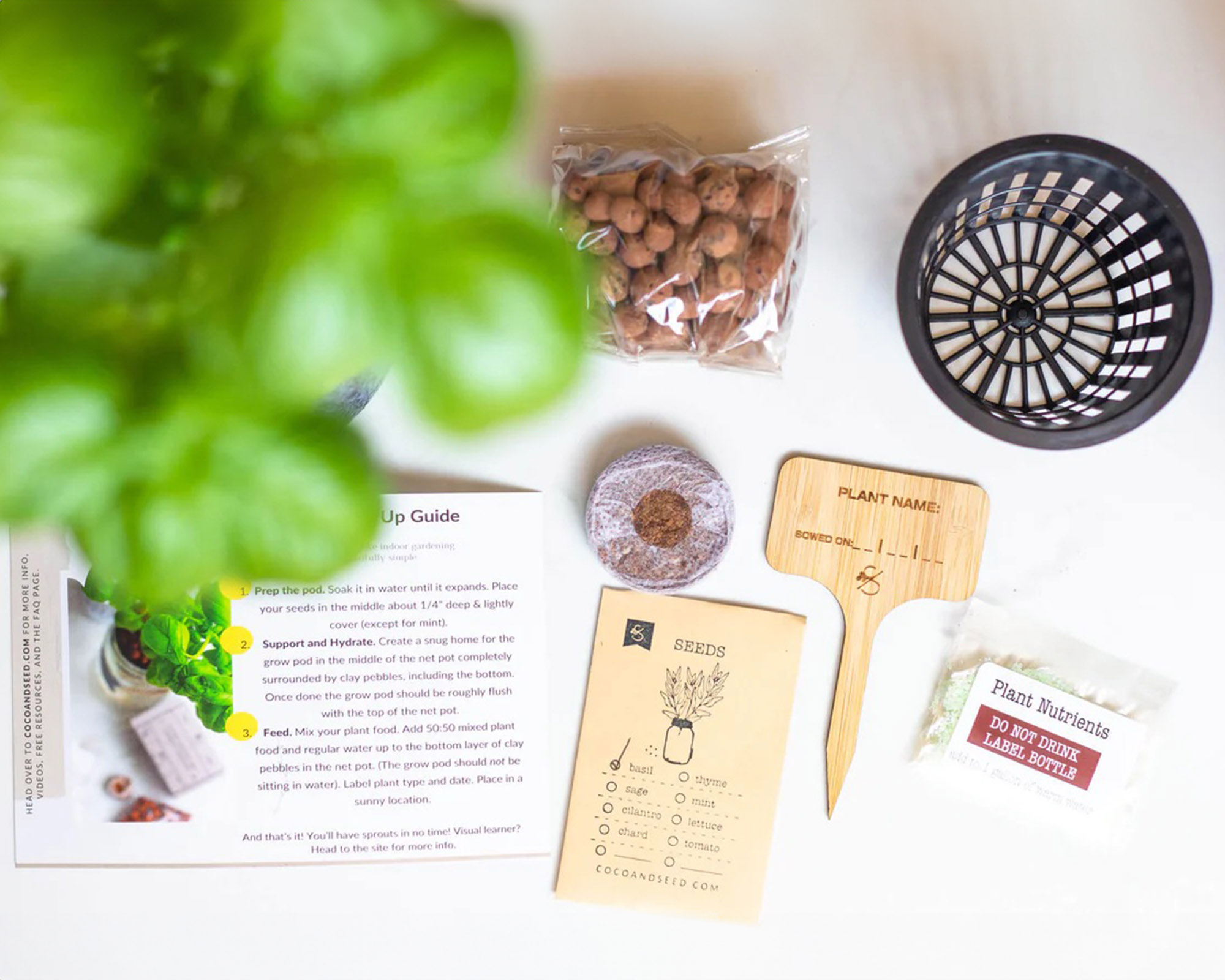
The supplies you’ll need to grow lettuce hydroponically are minimal and include:
- A container: Use a container – preferably a clear glass jar – that is wide enough to support a growing root system. The clear glass will allow you to monitor root health.
- A mesh or net pot: Sized to fit within the glass jar, this small pot will hold the growing medium (see below).
- A growing medium: Clay pebbles are an ideal medium to support the growing root system. These stabilize the plants in the jar and aerate the roots. Other options include rockwool, perlite, and coconut coir.
- A growing pod: This is a small pod of compressed soil that will expand in water and will be where the seeds germinate. Alternatively, try germinating seeds in paper towel.
- Lettuce seeds or seedlings: Use a variety of lettuce that forms leaves and not heads.
- Hydroponic fertilizer: Use a fertilizer specially formulated for hydroponic growing.
- A light source: A sunny window or a grow light will provide plenty of light for growing lettuce.
The Lettuce Hydroponic Mason Jar Kit, available in the Gardening Know How Shop, provides a container, growing medium, nutrients, and a seed mix (red romaine, green romaine, red oakleaf, green oakleaf, red leaf lettuces, and lollo rossa). It also contains growing directions and a bamboo plant label to help you distinguish this grow kit from other mason jar growing kits you may purchase in the Shop. A protective cover for the 16-ounce mason jar helps keep the water cool and discourages algal growth.
Planting Lettuce in the Jar
Once you have the necessary materials, getting started with your new hydroponic lettuce journey doesn’t take more than 30 minutes. These are the steps:
Sign up for the Gardening Know How newsletter today and receive a free copy of our e-book "How to Grow Delicious Tomatoes".
- Place your grow pod in a shallow water-filled dish to expand and hydrate the soilless mix.
- Once the grow pod expands, sow seeds about ¼-inch deep, then cover lightly with some of the soilless mix.
- Place some clay pebbles on the bottom of the net pot, then set the planted grow pod inside. Add clay pebbles around the grow pod so it fits snuggly into the net pot. The grow pod’s top should be level with the top of the net pod. Place the pot in the mason jar.
- Mix the plant food according to directions. Create a 50:50 liquid mixture of the plant food and water and pour this into the jar until it reaches the bottom layer of clay pebbles. The grow pod itself should not sit in water, just the clay pods, which form the bottom layer of the net pod.
- Wrap the jar with the protective cover and place it on a windowsill or under a grow light.
You can also skip the seed germination step and use small lettuce seedlings. If so, just wash off the dirt from the seedlings’ roots and nestle them into the clay pebbles. Keep the stem and leaves above the pebble surface. Fill with the 50:50 plant food mixture up to the top of the plant roots.
Taking Care of Hydroponic Lettuce
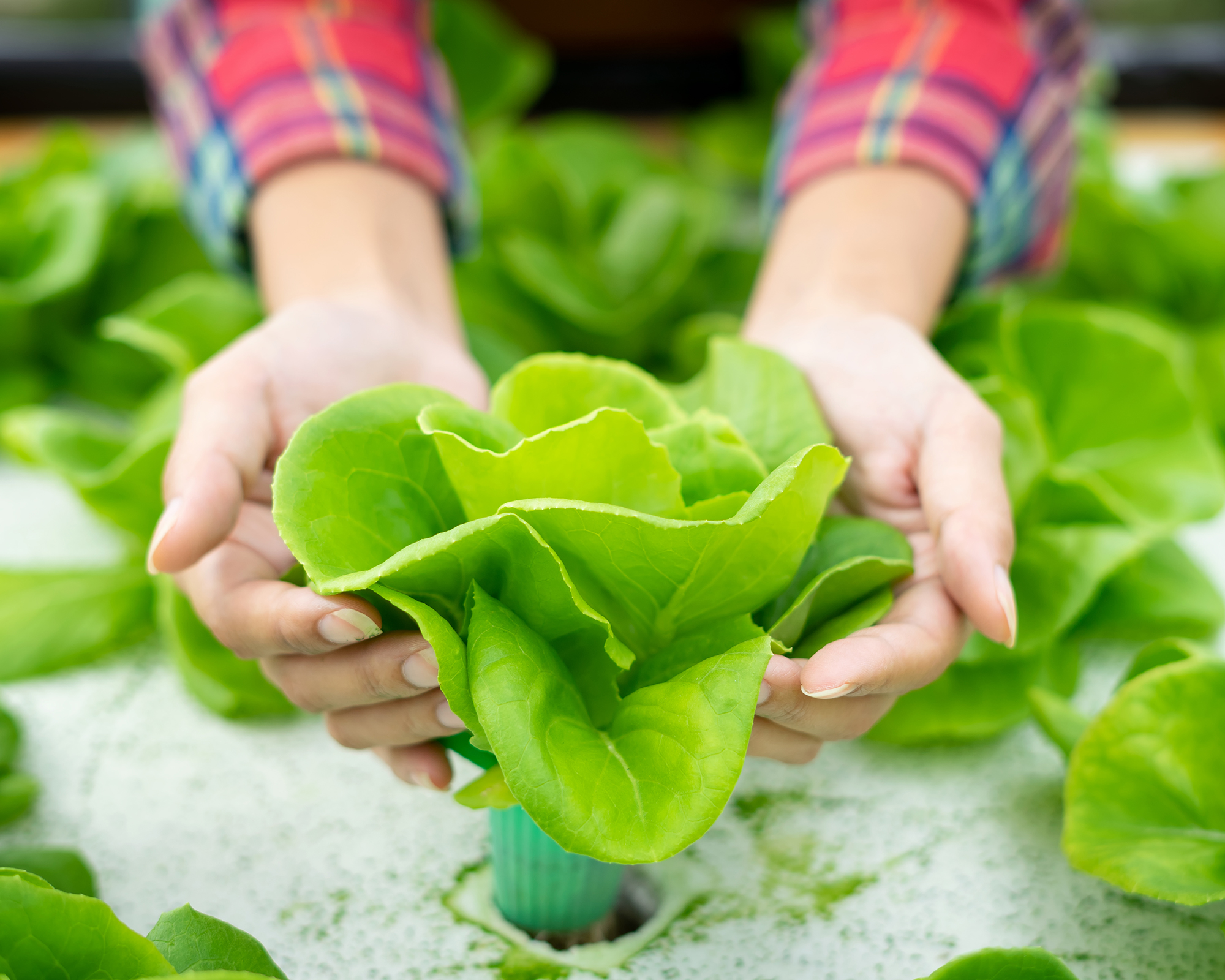
Lettuce seeds germinate pretty quickly, so keep an eye out for little specks of green to emerge from the clay pebbles and soilless mix after about 7-10 days. From this point, caring for lettuce will be pretty much hands-off. Just be sure to pay attention to:
- Water. Lettuces are all leaf, so they lose water through evapotranspiration. Check the water level in your jar every few days to ensure the roots stay moist. Freshen up the water occasionally to prevent algal growth. Use room temperature water.
- Nutrients. Your fast-growing lettuces will go through that initial dose of fertilizer in a few weeks. Be sure to add nutrients on a schedule according to the directions on your fertilizer package.
- Light. Lettuce grows best with consistent light of about 5 or more hours per day. A sunny window should do the trick, no matter the time of year. Even cloudy days should provide enough light, but it’s always a good idea to have a full-spectrum grow light in case of extended periods of cloudy days.
- Temperature: Lettuce is one of those crops that likes to grow on the cool side, with ideal growing temperatures between 60 and 70°F (15 to 21°C).
- Air flow. If possible, use a fan to gently blow across your hydroponic lettuce jars. This helps prevent mold spores from settling onto your lettuce’s leaves. Or simply open a window to allow a fresh breeze to come in, weather permitting.
Harvesting
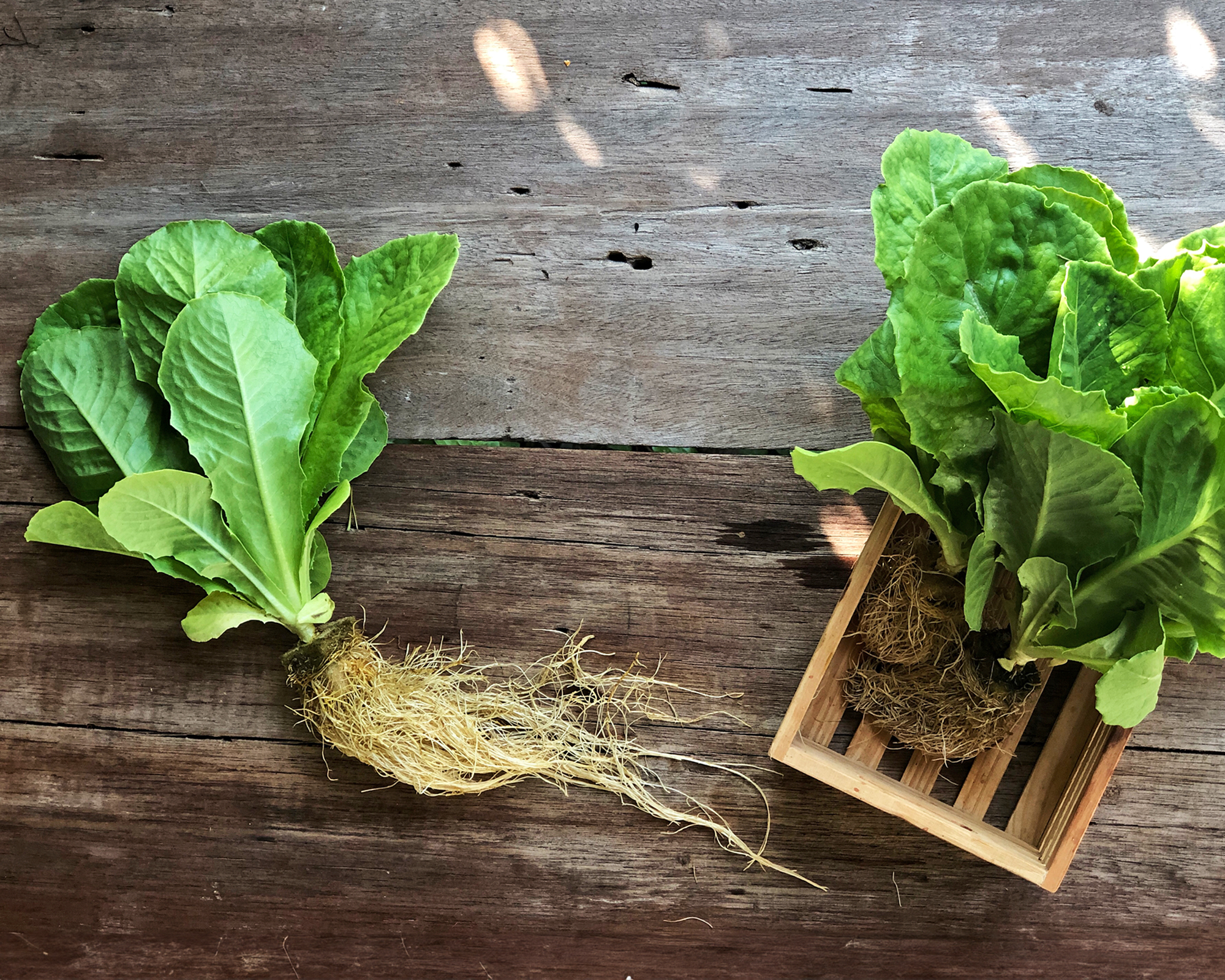
You’ll find that the leaves of your hydroponically grown lettuce are ready in about four weeks. But, before removing the entire plant from the mason jar, you need to know there’s a secret to keeping that plant producing for many more weeks, by harvesting lettuce leaves as cut and come again.
Simply remove the outer ring of leaves as needed and let the smaller inner leaves keep growing. Either gently peel them off the plant or use sharp snips to cut the leaves you’ll need for that day. Repeat every few days. Leaf lettuce is truly a gift that keeps on giving.
Your lettuce plant will keep producing harvestable leaves for about two months. It will eventually “bolt,” or send up a flowering stalk, and stop producing leaves. You’ll know its end is near when the leaves begin to taste bitter, and the leaves will also become much smaller. To keep a steady harvest, start a new mason jar of lettuce every other month. Your sunny windowsill or kitchen counter will become a mini salad factory!

Ellen Wells is a horticultural communications consultant with 30 years of experience writing about all aspects of the gardening world.
She has worked for many of horticulture’s biggest brand names, writing blog posts, articles, press releases, and design and instructional pieces. Her previous roles include Senior Editor and Editor-at-Large for Ball Publishing.
Ellen is based in New England where she gardens in Zone 7a. She loves tending to flower-filled containers on the patio and puttering around her vegetable garden.
